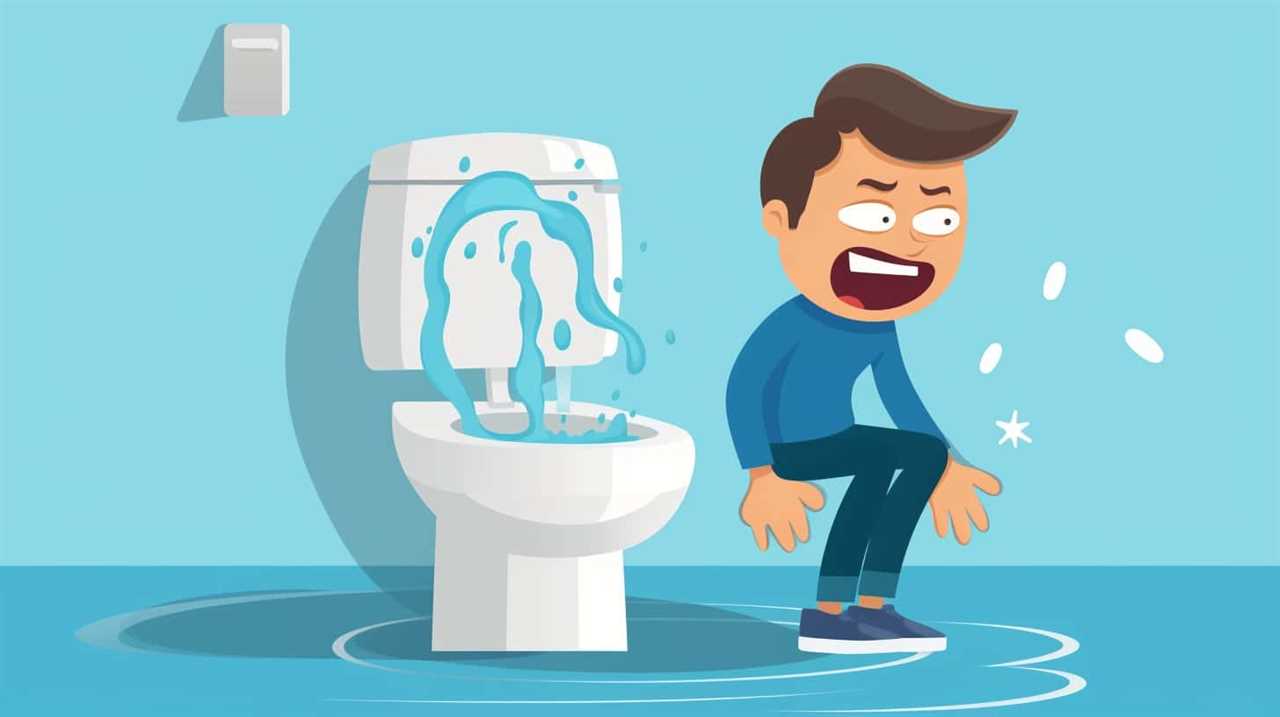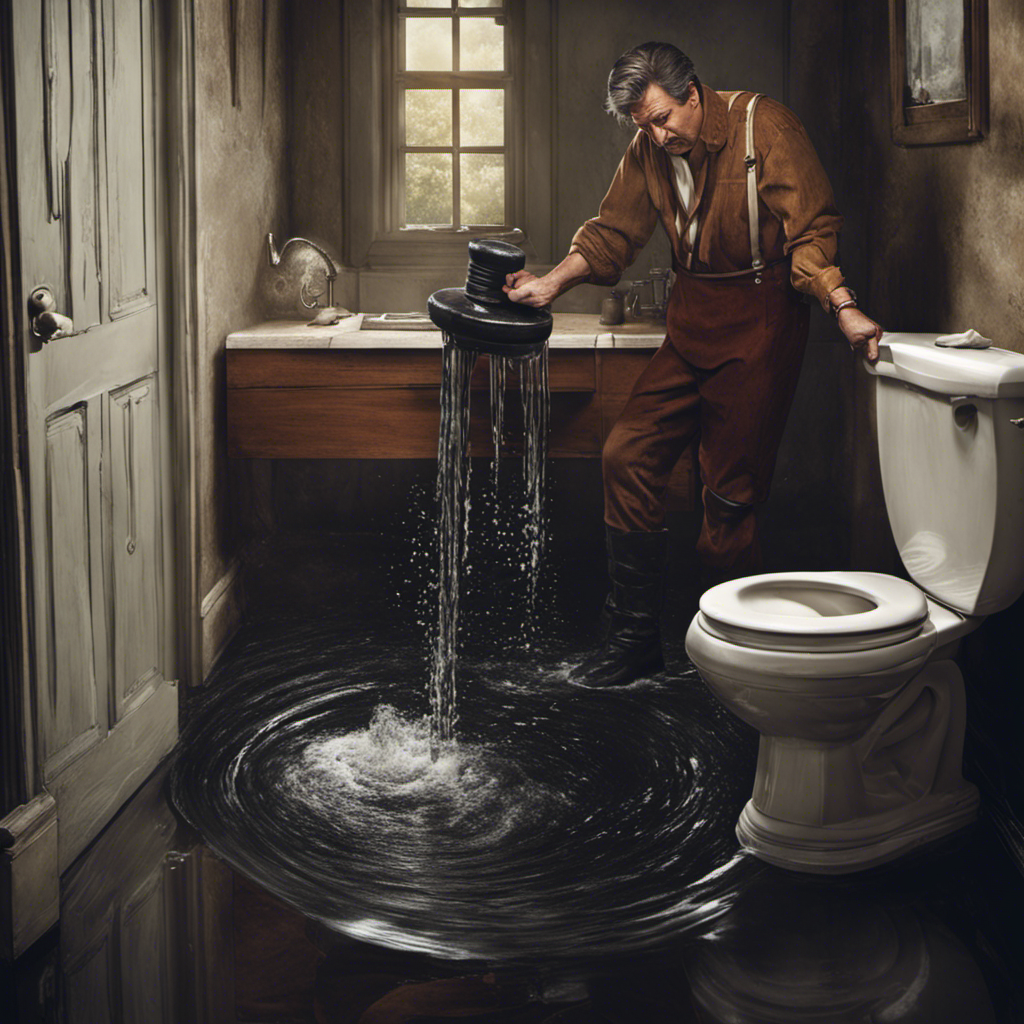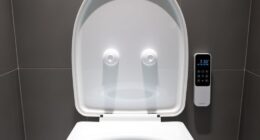Are you frustrated with a toilet that is not flushing properly? Don’t worry any longer! We have the ultimate guide to help you master the art of toilet flushing.
In this article, we’ll share with you the tried and tested methods to ensure a powerful and efficient flush every time. From checking the water level to using a plunger or toilet auger, we’ve got you covered.
Say goodbye to partial flushes and hello to a fully functioning toilet!
Key Takeaways
- Low water level can prevent proper flushing
- Increase water level by turning the fill valve clockwise
- Adjust flapper chain length for smooth movement of the flapper
- Clear clogs or obstructions with a plunger or toilet auger
Check the Water Level
To ensure a proper flush, we need to start by checking the water level in the toilet tank. A low water level can prevent the toilet from flushing all the way, causing frustration and inconvenience.
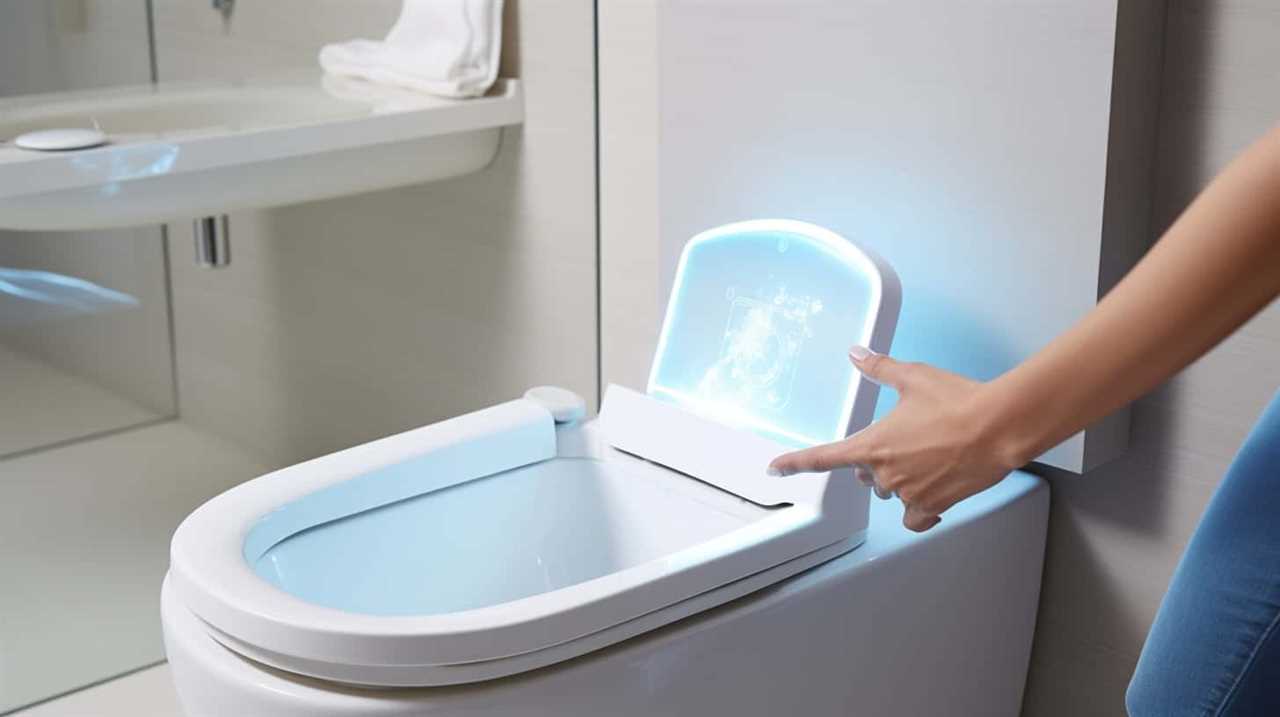
To increase water in the tank, locate the fill valve, usually located on the left side of the tank. Turn the valve clockwise to increase the water level. It’s important to note that the water level should be about ½ to 1 inch below the overflow tube.
If the water level is already adequate, but the toilet still doesn’t flush properly, there may be other issues at play. In such cases, it’s best to seek professional assistance to diagnose and fix the problem.
Ensuring the proper water level is crucial for a fully functional flush.
Adjust the Flapper Chain
To adjust the flapper chain, we need to ensure it’s properly aligned and not too tight or too loose. Here are five steps to adjust the flapper chain:
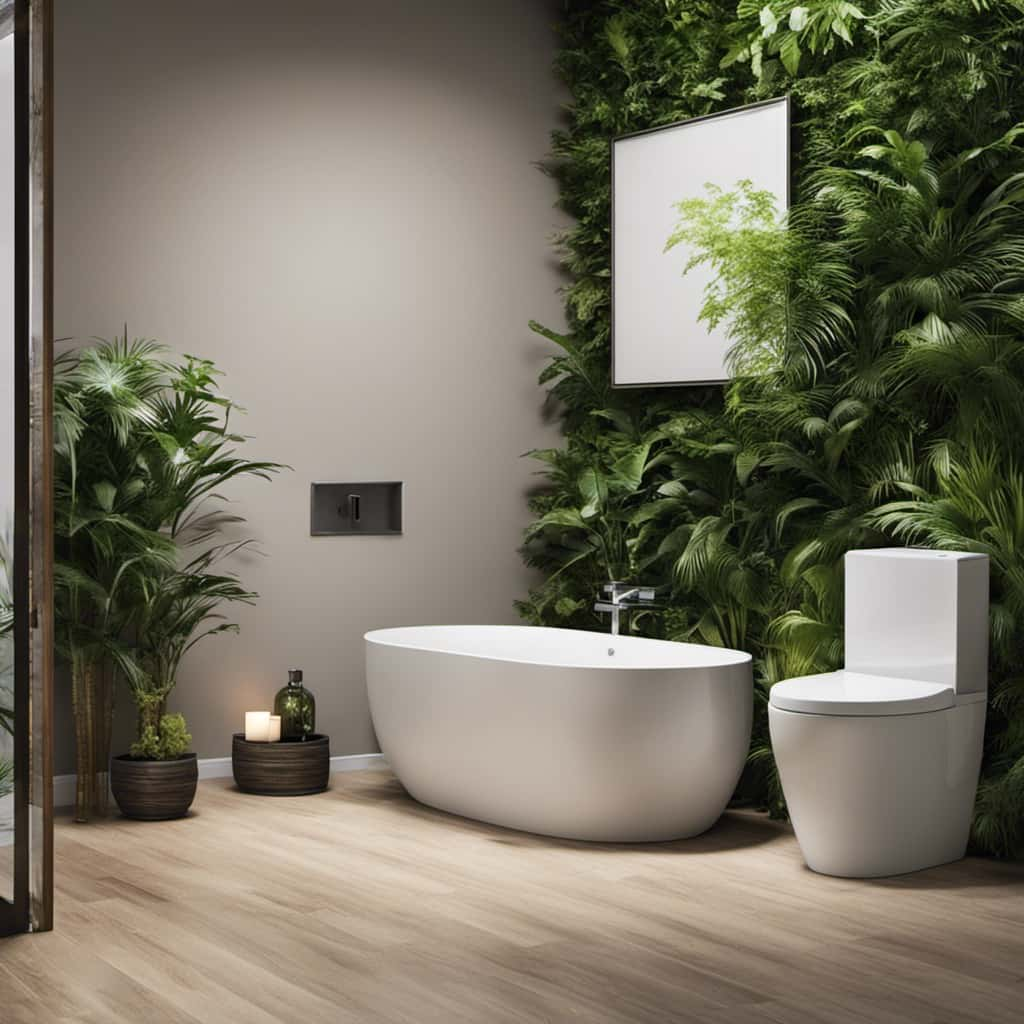
- Start by turning off the water supply to the toilet.
- Remove the tank lid and locate the flapper chain. It should be connected to the flush lever and the flapper itself.
- Adjust the length of the chain by either tightening or loosening it. Make sure there’s enough slack for the flapper to fully close but not so much that it gets tangled or caught.
- Test the flush by pushing the flush lever. The flapper should lift and close smoothly without any resistance.
- If the flapper doesn’t close properly, you may need to replace the flapper seal or adjust the fill valve.
Once you have adjusted the flapper chain, you can move on to the next step of clearing any clogs or obstructions.
Clear Any Clogs or Obstructions
After adjusting the flapper chain, we can address the issue of clearing any clogs or obstructions by using a plunger or a toilet auger. These unclogging methods are effective troubleshooting techniques that can help restore the proper flushing function of your toilet.
To start, grab a plunger with a flange, which is specifically designed for toilets. Place the plunger over the drain hole and firmly push down, then pull up in a quick motion. Repeat this plunging action several times until the clog is dislodged.
If the plunger doesn’t work, you can try using a toilet auger. Insert the auger into the drain hole and rotate the handle clockwise. This will help break up the clog and allow it to be flushed away.
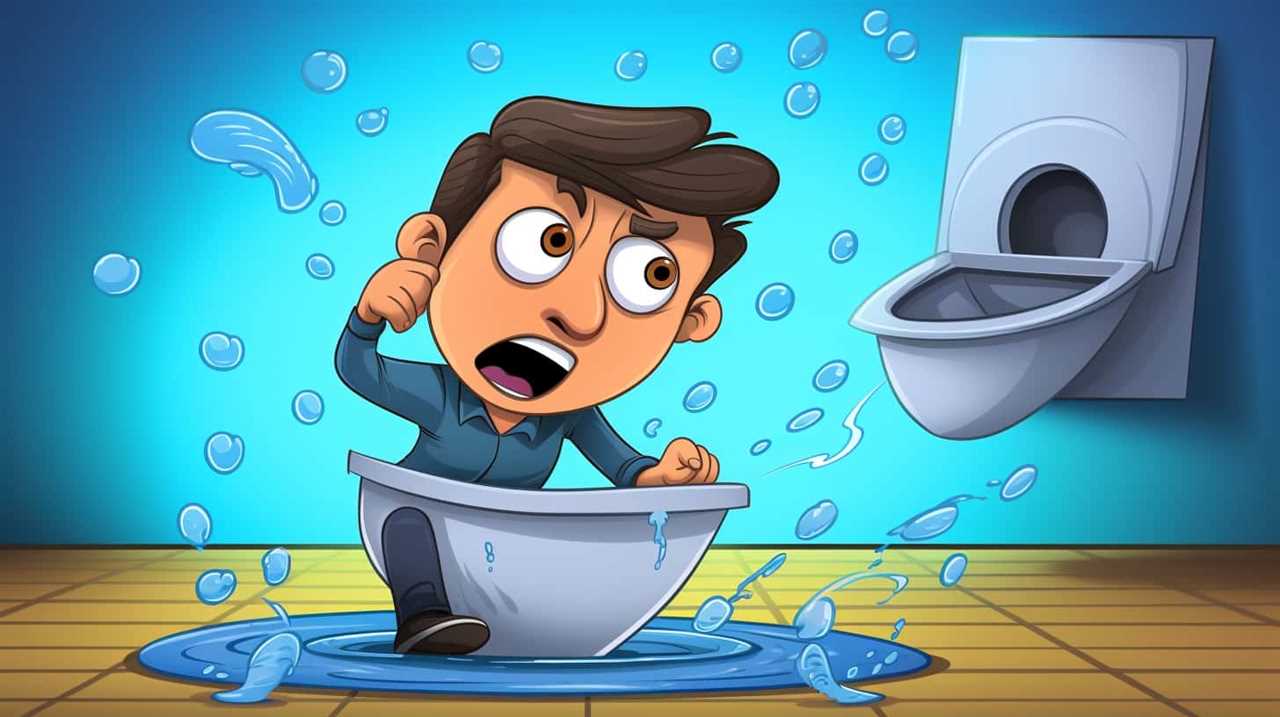
Remember to always exercise caution and follow proper safety protocols when attempting to clear clogs or obstructions in your toilet.
Use a Plunger or Toilet Auger
After adjusting the flapper chain and clearing any clogs or obstructions, we can now move on to the next step: using a plunger or toilet auger. These tools are essential for toilet maintenance and troubleshooting common toilet issues.
Here are five important points to keep in mind when using a plunger or toilet auger:
- Position the plunger over the drain hole and create a tight seal.
- Use firm and consistent pressure to create suction and dislodge the blockage.
- Pump the plunger up and down several times, maintaining the seal.
- If the plunger doesn’t work, try using a toilet auger.
- Insert the auger into the drain hole and turn the handle clockwise to break up the obstruction.
Consider Upgrading Your Toilet’s Flush Mechanism
Upgrading our toilet’s flush mechanism can significantly improve the efficiency and effectiveness of our flushing system. If we find that our toilet is not flushing all the way, it may be time to consider upgrading to a more advanced flush mechanism. There are several upgrade options available, each with their own benefits and features. It is important to choose a flush mechanism that is compatible with our toilet model and meets our specific needs. Consulting with a professional can provide valuable guidance and ensure a successful upgrade. They can help us determine the best flush mechanism for our toilet and handle the installation process. By upgrading our toilet’s flush mechanism, we can enjoy a more powerful and reliable flushing system.
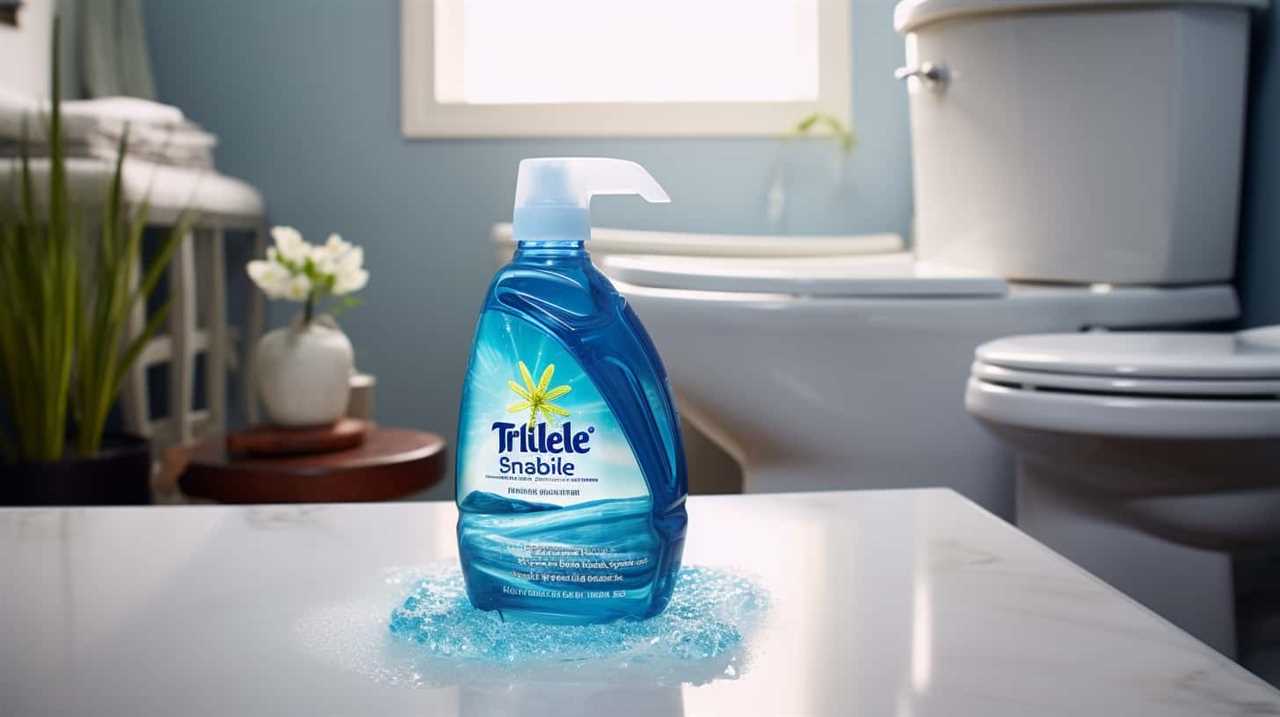
| Upgrade Option | Benefits |
|---|---|
| Pressure-assisted flush | Provides a stronger, more forceful flush |
| Dual-flush mechanism | Offers the option of a reduced flush for liquid waste |
| Gravity-flush with larger trapway | Improves the flow of waste, reducing the likelihood of clogs |
Frequently Asked Questions
How Often Should I Check the Water Level in My Toilet?
We regularly check the water level in our toilet to ensure it’s not too low. Troubleshooting low water levels and maintaining optimal levels are important to prevent flushing issues and ensure proper functioning.
Can I Adjust the Flapper Chain if the Toilet Is Still Not Flushing Properly?
To troubleshoot a toilet flush, we can adjust the flapper chain. It’s like fine-tuning a musical instrument to create harmony. By making small adjustments, we can ensure the flapper seals properly and allows a complete flush.
What Are Some Common Clogs or Obstructions That Can Prevent a Toilet From Flushing All the Way?
Toilet bowl stains and toilet paper buildup are common clogs that can prevent a toilet from flushing properly. These obstructions restrict the flow of water and can be resolved by using a plunger or a toilet auger.
Are There Any Specific Techniques or Tips for Using a Plunger or Toilet Auger Effectively?
Using a plunger effectively involves creating a tight seal and applying firm, rhythmic pressure. Troubleshooting toilet auger techniques include inserting the auger into the toilet drain and rotating it to break up clogs.

What Are the Benefits of Upgrading My Toilet’s Flush Mechanism?
Upgrading your toilet’s flush mechanism offers several benefits, including improved flush power and efficiency. By enhancing the technology behind the flush, you can ensure that your toilet consistently flushes all the way, providing a cleaner and more effective experience.
Conclusion
In conclusion, by following these simple steps, you can ensure that your toilet flushes all the way and avoid any frustrating plumbing problems.
- Check the water level and adjust the flapper chain if necessary.
- Clear any clogs or obstructions using a plunger or toilet auger.
- And if all else fails, consider upgrading your toilet’s flush mechanism for a more efficient and powerful flush.
Don’t let a weak flush ruin your day – take action and enjoy a fully functioning toilet.



